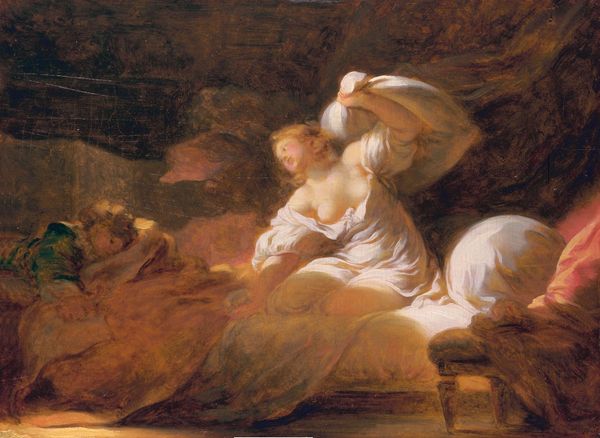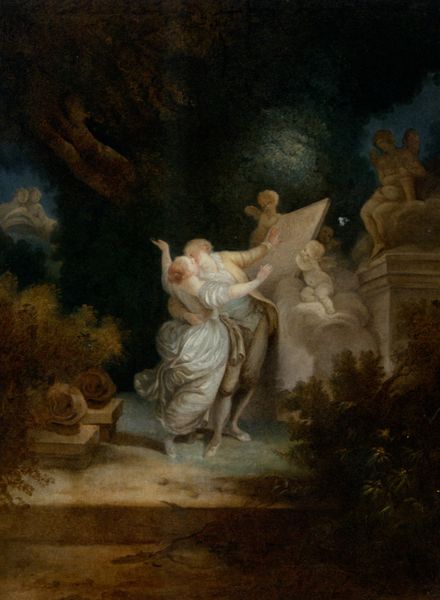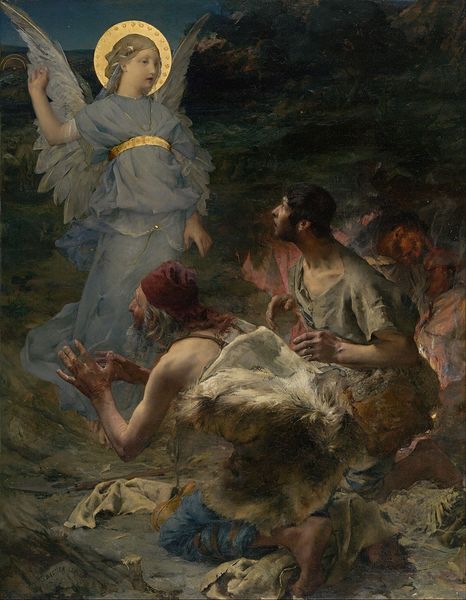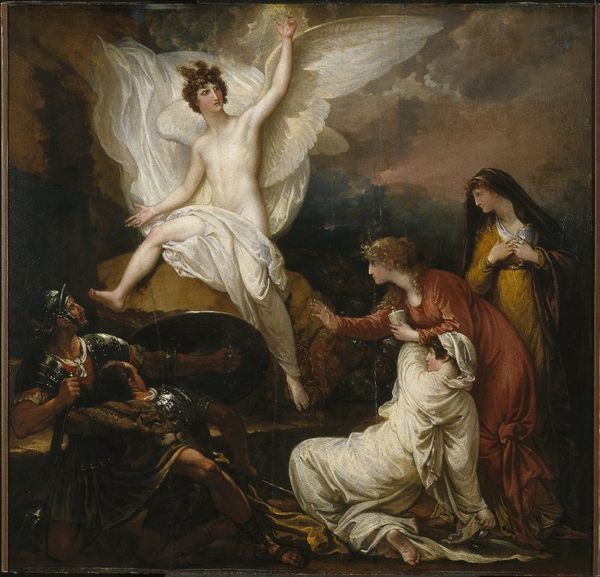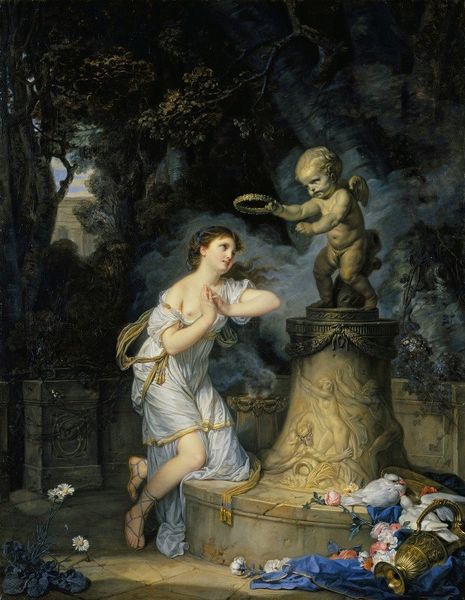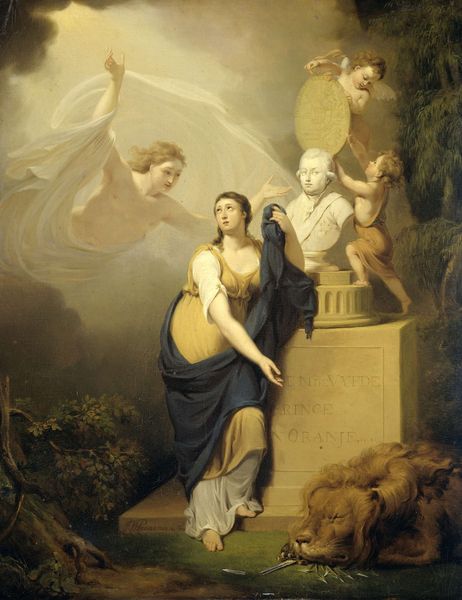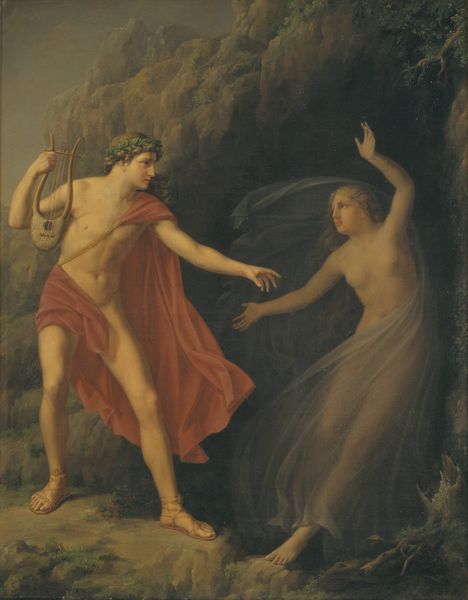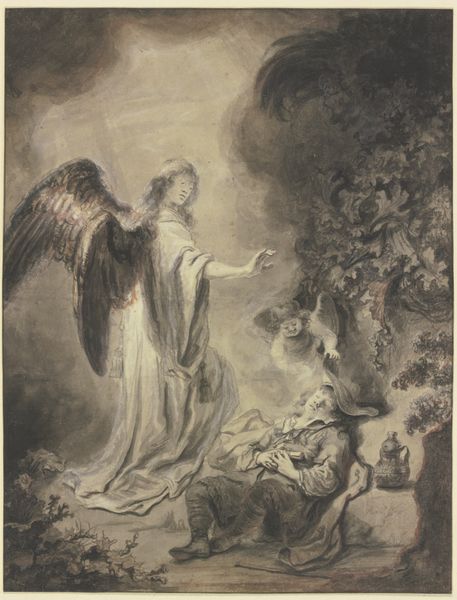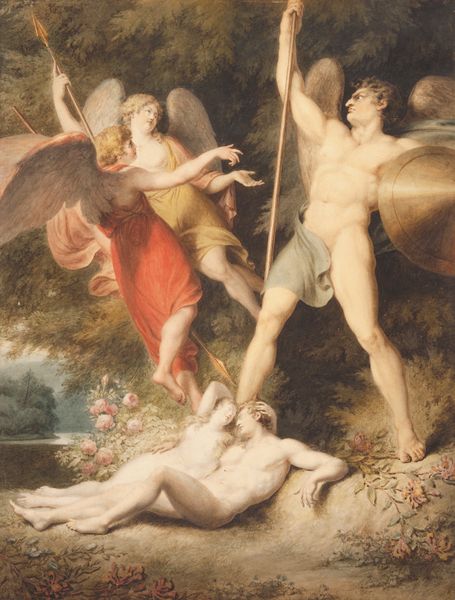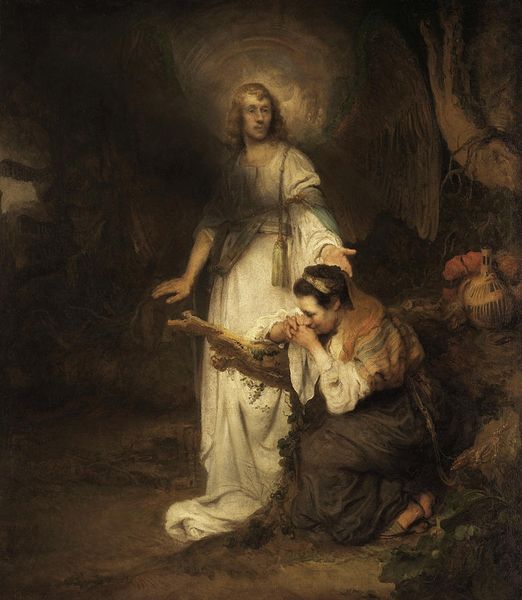
Dimensions: 84 x 66 1/4 in. (213.4 x 168.3 cm)
Copyright: Public Domain
Curator: Looking at "Mercy's Dream" by Daniel Huntington, created in 1858, what strikes you immediately? Editor: It has a soothing quality. The soft light on the figures and the deep greens surrounding them give a sense of tranquility. There is a clear symbolic quality to how the figures have been painted. Curator: The figures you see exemplify Huntington’s foray into religious allegory. Mercy, slumped as though exhausted in this dark space, finds an angel reaching down, bringing a kind of ethereal illumination that casts itself around Mercy’s head. It’s rich with the symbology of divine intervention. It makes me wonder about the culture in which Huntington was painting. What narratives was it building for viewers, particularly women? Editor: The work was composed during a period when paintings in this style enjoyed increasing popularity among American audiences, though artists faced pressure to moralize. And Daniel Huntington made no secret of his religious views, so in terms of his cultural context, I wonder if it would have been viewed by the 19th-century public through that particular lens. Curator: It is fascinating that you see the artist's faith reflected in this oil painting on canvas, particularly in how Mercy accepts illumination from a religious figure. To your point, this painting now in the Metropolitan Museum of Art asks us, what meaning can viewers, centuries removed, make of a spiritual intervention that seems incredibly private, almost like an internal shift rather than a public miracle. Editor: This prompts a compelling debate over the function of museums: Can viewers extract personal significance from displays that risk overshadowing, and so sanitizing, individual creative vision? The title indicates an extremely individual experience, that in Huntington's lifetime may have been viewed as overtly political in terms of gender roles and expectations. Curator: It speaks to the strength of allegory itself that "Mercy's Dream" has this emotional persistence that seems to move so many viewers who come into contact with this canvas. Editor: Indeed, the composition still manages to encourage personal, almost confessional meditations on larger sociopolitical anxieties today.
Comments
No comments
Be the first to comment and join the conversation on the ultimate creative platform.
